Your The two families of fundamental particles out of which all ordinary matter is made are images are available in this site. The two families of fundamental particles out of which all ordinary matter is made are are a topic that is being searched for and liked by netizens now. You can Download the The two families of fundamental particles out of which all ordinary matter is made are files here. Get all royalty-free photos.
If you’re looking for the two families of fundamental particles out of which all ordinary matter is made are pictures information linked to the the two families of fundamental particles out of which all ordinary matter is made are interest, you have come to the ideal blog. Our site frequently provides you with hints for downloading the maximum quality video and image content, please kindly search and locate more informative video articles and graphics that match your interests.
The Two Families Of Fundamental Particles Out Of Which All Ordinary Matter Is Made Are. Both families consist of six kinds of particles each. Baryons made of an odd number of quarks usually three quarks and mesons made of an even number of quarks usually one quark and one antiquark. 11 The two families of fundamental particles out of which all ordinary matter is made are. The two families of fundamental particles out of which all ordinary matter is made are.
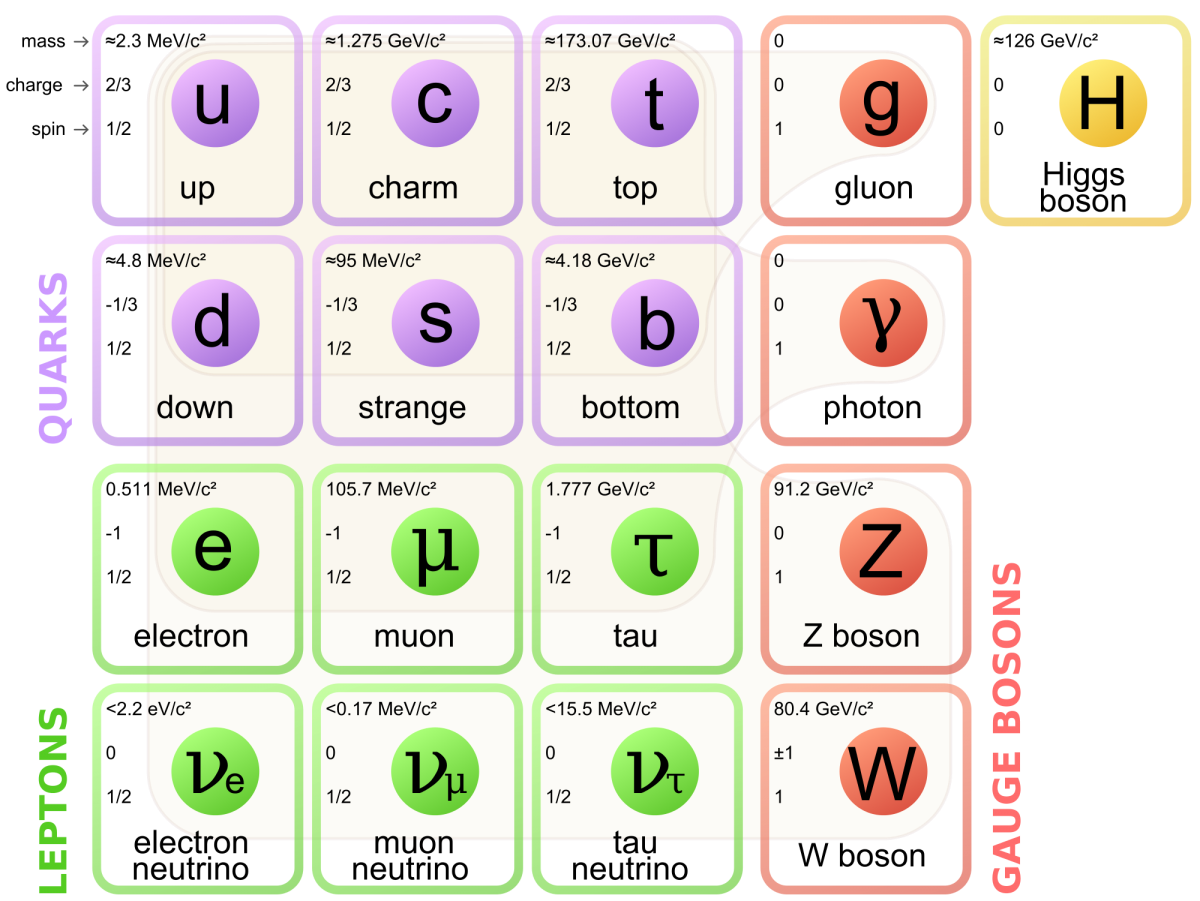 Ask Ethan Why Are There Only Three Generations Of Particles By Ethan Siegel Starts With A Bang Medium From medium.com
Ask Ethan Why Are There Only Three Generations Of Particles By Ethan Siegel Starts With A Bang Medium From medium.com
We also discuss how clarifications of such models might help scientists understand the birth and evolution of the Universe. Which of the following is not an exchange particle that mediates the four fundamental forces of nature. The law of conservation of energy maintains that the black hole must lose energy to pay for the creation of this mass. The other two families are progressively more massive. Baryons made of an odd number of quarks usually three quarks and mesons made of an even number of quarks usually one quark and one antiquark. Both families consist of six kinds of particles each.
Which of the following is not an exchange particle that mediates the four fundamental forces of nature.
Quarks are the particles that group together to form hadrons. The two families of fundamental particles out of which all ordinary matter is made are. The law of conservation of energy maintains that the black hole must lose energy to pay for the creation of this mass. Nothing in the standard model rules out more families at higher and higher mass but experimental evidence suggests that three is all. Test bank Questions and Answers of Chapter 28. Most of the mass of ordinary matter comes from two hadrons.
 Source: pinterest.com
Source: pinterest.com
12 What happens when a particle and its corresponding particle of antimatter meet. A neutron is made from two down quarks and an up quark. 1 There are two families of fundamental particles - leptons and quarks. He added that all matter that surrounds us and that we can interact with is made of particles from two families namely quarks and leptons. The other two families are progressively more massive.
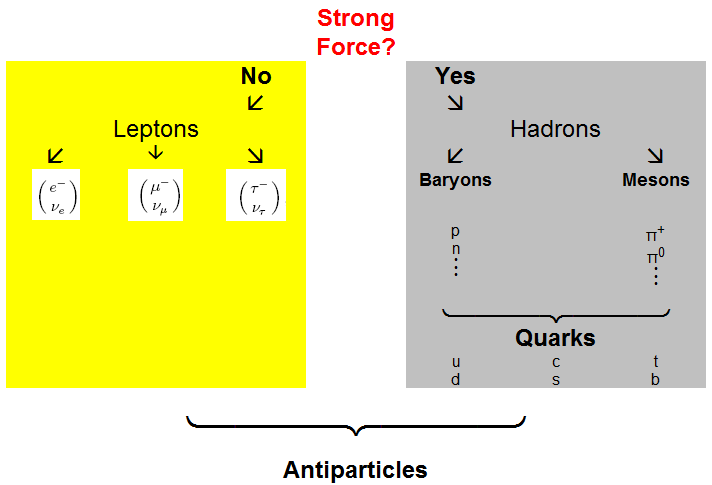 Source: electron6.phys.utk.edu
Source: electron6.phys.utk.edu
The Fundamental Forces in Nature. Baryons made of an odd number of quarks usually three quarks and mesons made of an even number of quarks usually one quark and one antiquark. 2 Each family has three generations with two particles and two anti-particles. 12 What happens when a particle and its corresponding particle of antimatter meet. E leptons and photons.
 Source: forbes.com
Source: forbes.com
The four fundamental forces are strong force weak force electromagnetic force gravity. He added that all matter that surrounds us and that we can interact with is made of particles from two families namely quarks and leptons. A protons and neutrons. C electrons and neutrinos. C Virtual particles created near the black.
 Source: pinterest.com
Source: pinterest.com
Concluding chapter we examine the current theory of elementary particles in which all matter is constructed from only two families of particles quarks and leptons. The law of conservation of energy maintains that the black hole must lose energy to pay for the creation of this mass. What happens when a particle and its corresponding particle of antimatter meet. These twelve particles fall into two families quarks and leptons. He added that all matter that surrounds us and that we can interact with is made of particles from two families namely quarks and leptons.
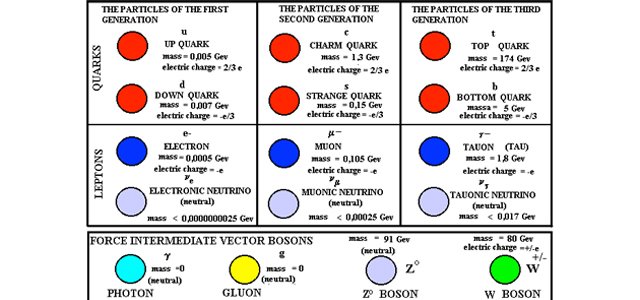 Source: coldfusionnow.org
Source: coldfusionnow.org
C Virtual particles created near the black. Hadrons are categorized into two families. Concluding chapter we examine the current theory of elementary particles in which all matter is constructed from only two families of particles quarks and leptons. The other two families are progressively more massive. Most of the mass of ordinary matter comes from two hadrons.
 Source: pinterest.com
Source: pinterest.com
D quarks and neutrinos. The Fundamental Forces in Nature. D quarks and neutrinos. What happens when a particle and its corresponding particle of antimatter meet. 2 Each family has three generations with two particles and two anti-particles.
 Source: pinterest.com
Source: pinterest.com
A protons and neutrons. C Virtual particles created near the black. C electrons and neutrinos. The four fundamental forces are strong force weak force electromagnetic force gravity. 1 There are two families of fundamental particles - leptons and quarks.
 Source: pinterest.com
Source: pinterest.com
This preview shows page 4 - 6 out of 10 pagespreview shows page 4 - 6 out of 10 pages. The lightest family for example consists of the electron the electron neutrino the up quark and the down quark. Concluding chapter we examine the current theory of elementary particles in which all matter is constructed from only two families of particles quarks and leptons. Most of the mass of ordinary matter comes from two hadrons. Here he goes into detail about the notion of quantum spin a microscopic version of the spin that can be put on a tennis ball that separates particles into two distinct families.
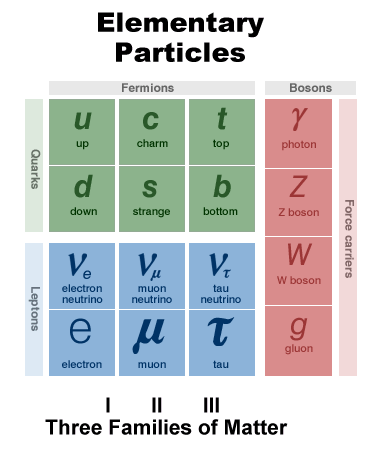 Source: electron6.phys.utk.edu
Source: electron6.phys.utk.edu
Most of the mass of ordinary matter comes from two hadrons. The two families of fundamental particles out of which all ordinary matter is made are. 11 The two families of fundamental particles out of which all ordinary matter is made are. E leptons and photons. Building Blocks of the Universe.
 Source: medium.com
Source: medium.com
Test bank Questions and Answers of Chapter 28. The lightest family for example consists of the electron the electron neutrino the up quark and the down quark. The other two families are progressively more massive. 3 All of normal matter is made from the first generations of these families. The Fundamental Forces in Nature.
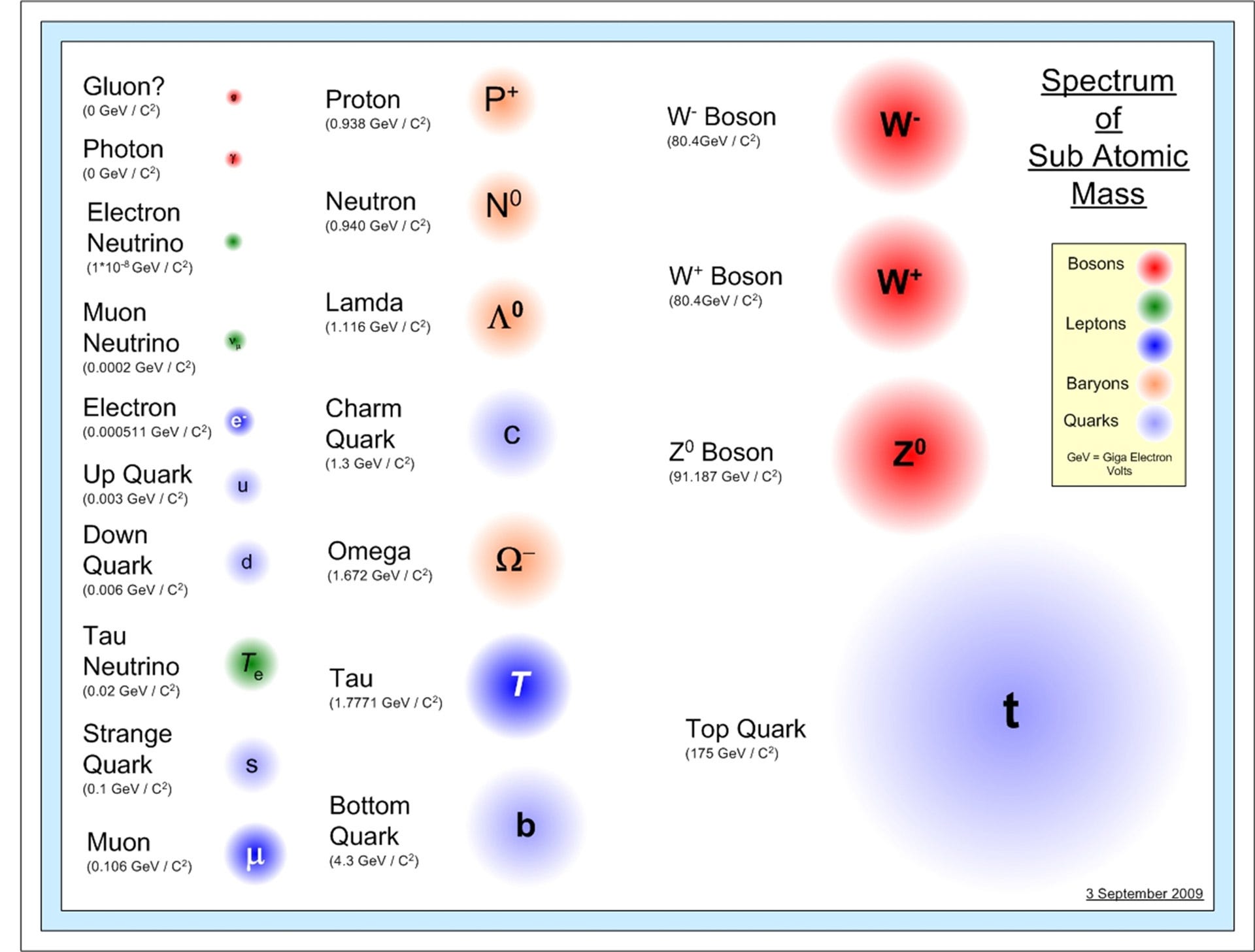 Source: medium.com
Source: medium.com
D quarks and neutrinos. These twelve particles fall into two families quarks and leptons. Baryons made of an odd number of quarks usually three quarks and mesons made of an even number of quarks usually one quark and one antiquark. Hadrons are categorized into two families. Concluding chapter we examine the current theory of elementary particles in which all matter is constructed from only two families of particles quarks and leptons.
 Source: slideshare.net
Source: slideshare.net
C Virtual particles created near the black. 1 There are two families of fundamental particles - leptons and quarks. Nothing in the standard model rules out more families at higher and higher mass but experimental evidence suggests that three is all. B Particles or antiparticles are created by a quantum mechanical effect near but outside the event horizon of the black hole. The Fundamental Forces in Nature.
 Source: pinterest.com
Source: pinterest.com
According to the Standard Model of particle physics we now know that all the matter around us is composed of combinations of only a few fundamental particles. Concluding chapter we examine the current theory of elementary particles in which all matter is constructed from only two families of particles quarks and leptons. Nothing in the standard model rules out more families at higher and higher mass but experimental evidence suggests that three is all. The two families of fundamental particles out of which all ordinary matter is made are. The Fundamental Forces in Nature.
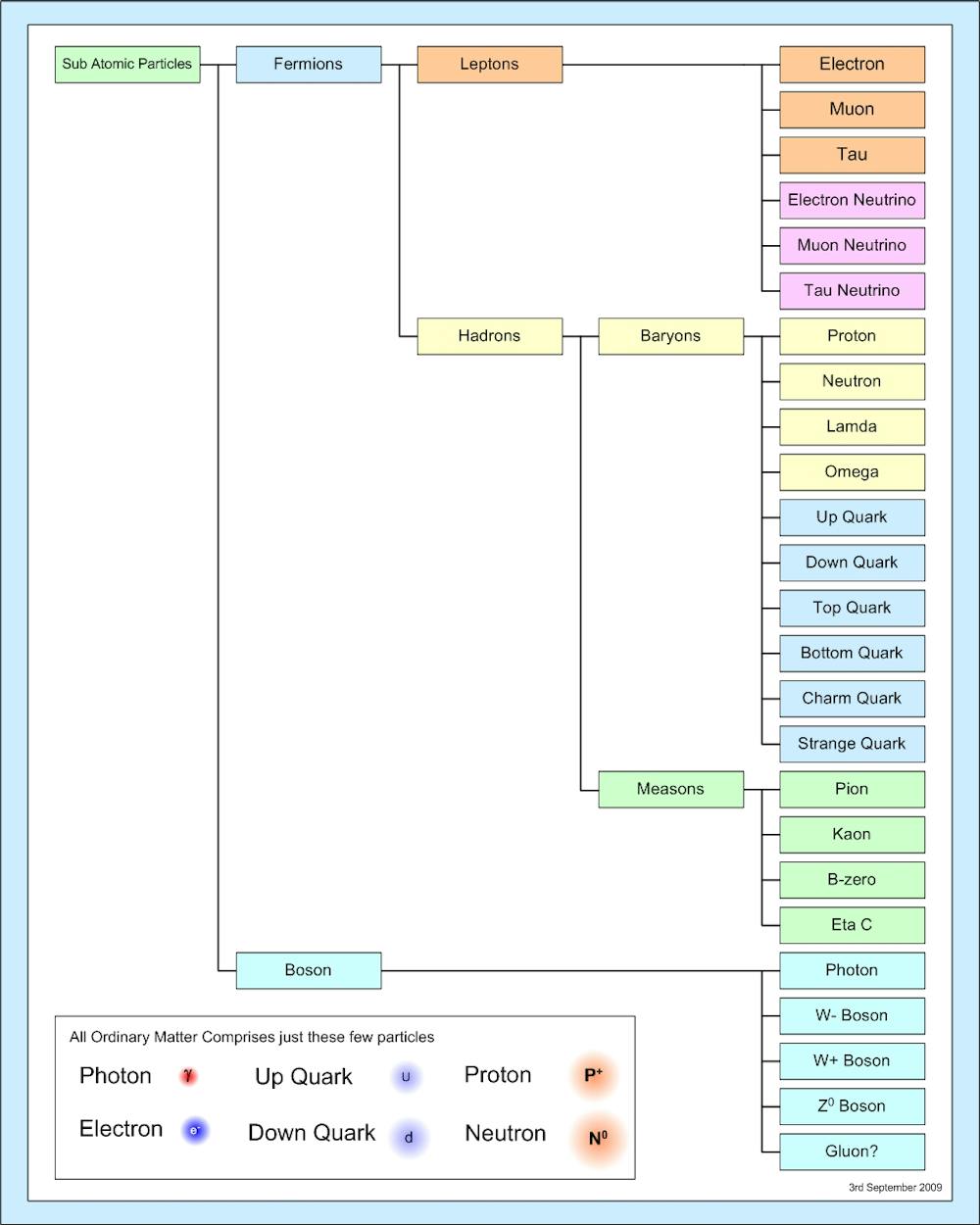 Source: theconversation.com
Source: theconversation.com
He added that all matter that surrounds us and that we can interact with is made of particles from two families namely quarks and leptons. 3 All of normal matter is made from the first generations of these families. 1 There are two families of fundamental particles - leptons and quarks. C electrons and neutrinos. Both families consist of six kinds of particles each.
 Source: pinterest.com
Source: pinterest.com
11 The two families of fundamental particles out of which all ordinary matter is made are. C electrons and neutrinos. Concluding chapter we examine the current theory of elementary particles in which all matter is constructed from only two families of particles quarks and leptons. C Virtual particles created near the black. We also discuss how clarifications of such models might help scientists understand the birth and evolution of the Universe.
 Source: energy.gov
Source: energy.gov
Concluding chapter we examine the current theory of elementary particles in which all matter is constructed from only two families of particles quarks and leptons. C electrons and neutrinos. 3 All of normal matter is made from the first generations of these families. E leptons and photons. Both families consist of six kinds of particles each.
 Source: pinterest.com
Source: pinterest.com
Concluding chapter we examine the current theory of elementary particles in which all matter is constructed from only two families of particles quarks and leptons. Both families consist of six kinds of particles each. Baryons made of an odd number of quarks usually three quarks and mesons made of an even number of quarks usually one quark and one antiquark. What happens when a particle and its corresponding particle of antimatter meet. B leptons and quarks.
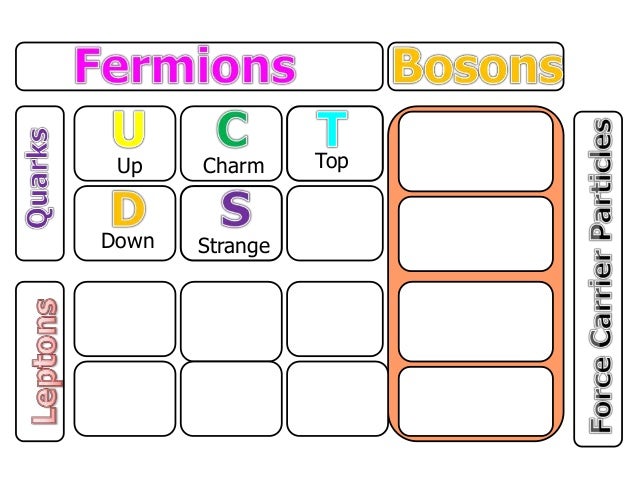 Source: slideshare.net
Source: slideshare.net
Building Blocks of the Universe. Most of the mass of ordinary matter comes from two hadrons. 11 The two families of fundamental particles out of which all ordinary matter is made are. Hadrons are categorized into two families. He added that all matter that surrounds us and that we can interact with is made of particles from two families namely quarks and leptons.
This site is an open community for users to submit their favorite wallpapers on the internet, all images or pictures in this website are for personal wallpaper use only, it is stricly prohibited to use this wallpaper for commercial purposes, if you are the author and find this image is shared without your permission, please kindly raise a DMCA report to Us.
If you find this site serviceableness, please support us by sharing this posts to your favorite social media accounts like Facebook, Instagram and so on or you can also save this blog page with the title the two families of fundamental particles out of which all ordinary matter is made are by using Ctrl + D for devices a laptop with a Windows operating system or Command + D for laptops with an Apple operating system. If you use a smartphone, you can also use the drawer menu of the browser you are using. Whether it’s a Windows, Mac, iOS or Android operating system, you will still be able to bookmark this website.





